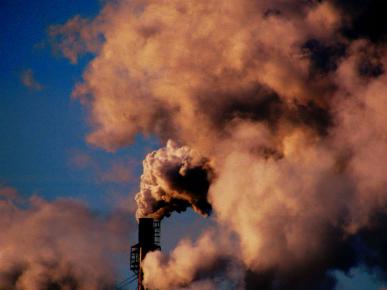
Photo credit: Billy Wilson cc
How would you respond to an upsetting medical diagnosis? Probably first with shock and fear, then you’d ask the doctor about realistic treatment options. That’s how it works for an individual, but what about when seven billion people get the bad news at the same time?
That’s what happened yesterday, when the White House released another troubling National Climate Assessment (NCA). It described a condition that’s going to get significantly worse without intervention – with troubling symptoms already apparent.
Now, to be fair, this NCA wasn’t really news in the “I didn’t see that coming” sense. Just like a patient who has been told to stop smoking for years, there has been plenty of warning that our “unfiltered” smokestacks are causing serious damage to our environment and health. Last month, in fact, the International Panel on Climate Change issued its fifth report, and this is the third National Climate Assessment – each making more specific estimates of the climate dangers ahead. And yet, we can’t quit our pack-a-day habit.
The disturbing news is all here: Threats to agriculture from drought, danger for coastal residents and businesses from rising seas, more frequent intense hurricanes, more asthma attacks for kids, the spread of insect borne disease, and much more.
But the good news is that this disease has a cure. In fact, in just about four weeks, the United States is poised to take a very important step towards improving the currently predicted outcome. On June 2, EPA is planning to announce limits on carbon emissions from existing power plants, which are America’s largest source of climate pollution – about a third of the total we produce.
When EPA announces the new standards, what will probably surprise most people is that the agency doesn’t already have limits on this type of pollution. A recent poll indicates that 56% of Americans assume we currently have these protections. That’s an understandable belief since EPA limits most other forms of air pollution, but up to now utilities have been free to put as much of this stuff as they can crank out in our common atmosphere. And all that pollution has a very real cost borne by society.
Of course, as with all other proposed air pollution rules, there will be a small but powerful group who howl in protest. They did it when EPA limited toxic mercury, sulfur, smog and other dangerous pollutants. I’m sure you’ll hear that ending unlimited carbon pollution will wreck our economy and bankrupt us all. But what those people won’t tell you is that studies have shown that every past air pollution rule has actually helped the U.S. economy, with benefits outweighing costs by a substantial margin.
The new rules alone won’t cure climate change. But, along with actions on cars and trucks that have already been announced, they are a substantial first step. These standards will also push utilities to modernize, help grow clean energy jobs, and give a boost to entrepreneurs who are looking for ways to power our economy more cleanly. (EPA Administrator Gina McCarthy has said the agency is exploring ways to make the rules flexible, allowing states and companies to find innovative ways to meet the standards.)
Cures are never painless, but they’re usually a lot better than the disease. And everyone knows that the sooner you act, the better the outcome. So let’s take yesterday’s diagnosis seriously, and when EPA announces the new carbon standards on June 2, let’s make sure Congress knows we all want a healthy future.
This post first appeared on our EDF Voices blog.









